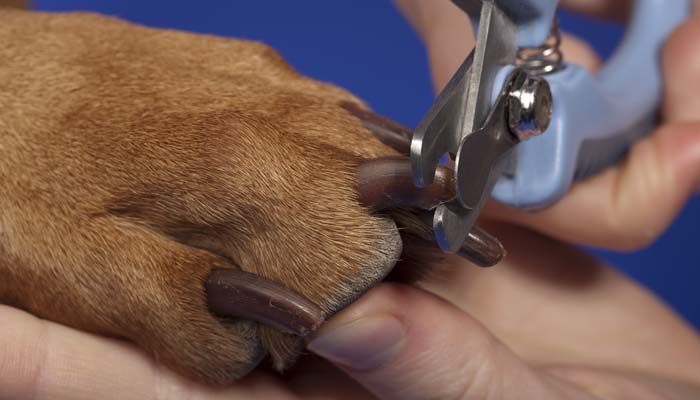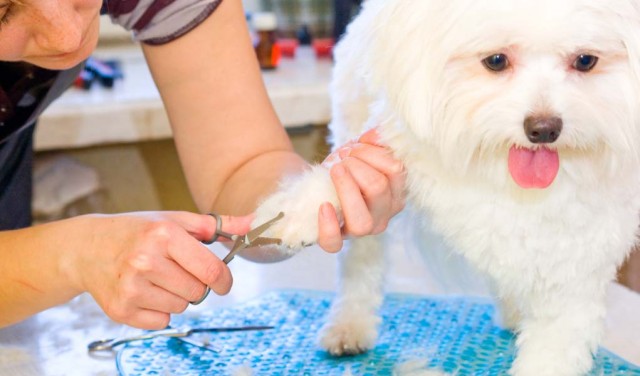
Table of Contents
If you're looking to save a couple of bucks every month on professional dog grooming, and would rather groom your dog at home, I highly respect that. However, please keep in mind of the following information I'm about to share with you, as these important safety tips for grooming at home are exactly that: important.
I myself have grooming many dogs over the years and learned that the process of grooming is much more than what it seems on the surface. Your dog does look differently at you once spending a good amount of time with your dog while grooming him becomes a regular practice in your house.
Today, I'm going to go through the general home dog grooming areas and cover a few important grooming safety aspects for each of those areas. This will help ensure that you know exactly what you're doing every time you choose to groom your dog at home, because you should never, ever, wing it.
Whether you take these steps in the order I present them below or you choose to pick your own chain of to-dos doesn't really matter. When you're grooming a dog at home, what matters is that you actually take action on these grooming safety tips and keep this in mind while taking good care of your pooch.
Important Safety Tips for Dog Grooming At Home
Safety tips for clipping your dog's nails
Most dogs have black color nails. If you're in this position, then you know how hard it is to determine whether or not you're about to clip too much and nip the quick. For those who do not know what the nail quick is, it's basically an extremely tender part within your dog's nails.
Dog's nail quick contain blood vessels and nerve endings, so once you clip too far back, your dog will let you know immediately. Dog owners who are lucky to have dogs with clear nails, like my Anastasia, will find it easier to stop before cutting into their pet's nail quick.
When going through the process with dog nail clippers, in order to avoid cutting too far into the dog's nails, start by clipping the nail slowly and in little bits. The outside of the nail is black, but the inside is white. Once you see a bit of black on the inside, stop right away. That is your target, the quick.
Should happen to clip the quick by accident, don't freak out. Just make sure you're prepared for this. Thus, before you begin clipping your dog's nails, get some flour ready, or styptic powder if you can afford it. As soon as you clip the quick, stick your finger in the flour or styptic powder, and press it against the quick.
FULL GUIDE: How to Stop Dog Nail Bleeding 101
When clipping your dog's nails, always, always keep some flour (or styptic powder) with you while doing so, just in case.
It may be uncomfortable for your dog when you press powder against his quick, but this will help clot the blood and stop the bleeding instantly. Hold your finger there for around 10 seconds.
You don't need to worry about cleaning the flour or powder off either, because it will go away on its own once you are done clipping your dog's nails, and your dog starts to walk around.
In case you choose to opt for styptic powder instead of the flour – I definitely recommend it – then there a few great options. Personally, I used a brand named Kwik Stop for a while. However, flour is a lot cheaper, and you will probably already have it somewhere around your house. The flour itself does not cause any pain to your dog, according to my veterinarian and this article.
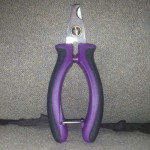 Now, moving onto the actual clipping of nails. My photo to the left shows the nail clippers that I use for my dog, which are Hartz Groomer's Best Clippers for Dogs. You can find these on Amazon here, but any similar dog nail clippers will do just as good of a job. Take a look at our reviews of the best dog nail clippers.
Now, moving onto the actual clipping of nails. My photo to the left shows the nail clippers that I use for my dog, which are Hartz Groomer's Best Clippers for Dogs. You can find these on Amazon here, but any similar dog nail clippers will do just as good of a job. Take a look at our reviews of the best dog nail clippers.
If your dog has long quicks, this means you are not cutting his nails enough. The quick grows with the nail, interestingly enough, so every dog owner should clip their dog's nails once a week, ideally. This will help the quick to recede back more, and will make nail trimming a little bit easier on the both of you.
Remember to stop and give your dog a break if he starts panting when you're clipping his nails. Panting is often a sign of stress in dogs. Another sign of stress can be when your dog cannot stop trying to lick his paws, as this article points out, so be mindful of these things.
A few more related articles on grooming your dog in general:
- How To Trim Your Dog’s Nails
- How to Calm Your Dog Before Grooming
- How Professional Pet Groomers Groom Dogs
FULL GUIDE: How to Cut Dog's Nails 101
Safety tips for filing the nails
Unsurprisingly, my dog absolutely hates having her nails clipped, but she does not mind when I file her nails down. When I purchased my current dog nail clippers, they came with a special nail file that is designed specifically for dog's rough nails.
Normally, I wouldn't recommend paying much attention to filing dog's nails. If you avoid doing something really crazy, it would be very difficult to mess this process up, unless you file straight into the quick. Anyway, this is what I would recommended.
Personally, I file my dog's nails down slightly after I clip them because they become rigid with sharp edges. Freshly clipped nails could scratch you down when your dog try to scratch himself, or if he jumps up on someone and accidentally scratches them. All I do is gently file around the edges that are sharp until they are smooth. It's simple, easy and fast.
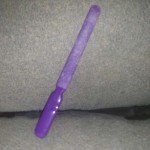 In the photo to the right you can see the dog nail file that I am talking about. The nail file I have came with the clippers that I purchased, which I found useful to my own surprise. I don't believe the set that I bought is still available, but I think Safari dog nail clippers have some sets which is a pretty good deal for those on a budget but wanting to have both clippers and a file.
In the photo to the right you can see the dog nail file that I am talking about. The nail file I have came with the clippers that I purchased, which I found useful to my own surprise. I don't believe the set that I bought is still available, but I think Safari dog nail clippers have some sets which is a pretty good deal for those on a budget but wanting to have both clippers and a file.
You do not have to file your dog's nails, but it's a can be good idea. I swear by this because I don't want my dog scratching herself or anyone else. We frequent the dog park every day, so she tends to get dirt and muck in her eyes, which makes her scratch them.
Also, I don't want her scratching other dogs and short, well groomed nails help big time. So, if you feel taking this extra precaution would be good, it's definitely worth the little effort that it takes. You can use a nail file designed for human nails as well; I have done this in the past and it works fine.
Here are a few other related grooming articles that you'll find useful:
- Pro Groomer’s Favorite Dog Grooming Products for Home Grooming
- Grooming Different Types of Dog Coats
- Fluff Your Pup: Vital Pet Grooming Tools for the Job
Safety tips for dog's bath time
Most pets aren't fans of the bath time. If your dog absolutely hates taking a bath, then the best safety tip I could offer you is to not bathe them at all. I know what you're thinking: “but I need to bathe my dog!” Yes, you do, but you don't always have to do it with water.
RELATED: The Best Dog Shampoo
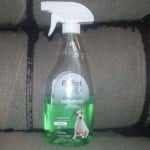 Fortunately, there are products out there that will allow you to do that. I myself use some of those on my dog when she simply won't cooperate and take a bath. One of those is a waterless dog shampoo, which you can see in the photo to the left. It's very simple to use, and most importantly – it's cheap. I've also previously written a column on using waterless shampoo on dogs.
Fortunately, there are products out there that will allow you to do that. I myself use some of those on my dog when she simply won't cooperate and take a bath. One of those is a waterless dog shampoo, which you can see in the photo to the left. It's very simple to use, and most importantly – it's cheap. I've also previously written a column on using waterless shampoo on dogs.
Waterless dog shampoos are great for dogs who tend to freak out when it comes to water. If you have a dog like this, I suggest switching from water and soap to a dry dog shampoo. This will ensure that your dog does not leap out of the tub and hurt himself, or hurt you.
Pet owners new to giving their dog a bath should read my step-by-step guide on how to give a dog a bath. You'll soon know that if your dog begins panting or licking himself excessively during bathing time, then you need to end it right then and there. Both are signs of anxiety and stress, and can be emotionally and mentally damaging to your canine.
First thing to do in order to ensure that your dog is comfortable during bath time is to keep the water not too hot and not too cold. If your dog hates the temperature of the water, then he'll probably try to jump out of the bath tub.
Always test the water with your hand first before you put your dog in there. Don't just stick a finger under the tap; actually submerge your hand and leave it there for some time. If it's too hot or cold for you, it will be for the dog.
Does your dog have a certain health issue that makes it hard for them to stand for long periods of time, such as arthritis?
If you have a dog with medical problems, or a senior dog with joint problems, bath time needs extra care. Safety tips for bath time with old or sick dogs are extremely important. Either use baby wipes to clean him off, or use extra caution when lifting your dog into the tub.
Dog owners who cannot manage to lift their dog s into the tub should try creating a walk board to help the dog. If that's you, and you're on a tight budget, then you can get a piece of wood that will act as a ramp from the floor into the tub, but be there to help him get down off of the ramp into the tub.
Pet owners who can afford a few products to help themselves and their pet have several options to choose from:
- You can buy dog steps or a dog ramp (cheapest option)
- You can get a dog grooming table with a lift (expensive)
- You can get a dog washtub (average)
One of these tools will ease the job significantly, but they're definitely not necessary if you can find a way to bathe your dog without them.
If you have an old or sick dog, remember to also stock up on puppy wipes (or baby wipes). It's a lot simpler to clean dogs using wet wipes because it's a quick and easy process, and won't cause any strain or stress on your dog or yourself.
However, if your dog needs a thorough cleaning, and the wet wipes do not cut it, talk to your vet about alternative grooming options. If you have a trusted professional groomer, they will be able to help you as well. It will cost more, so you have to weigh your options carefully.
Here's some more important dog grooming advice for home groomers:
- The Importance of Cleaning Dog’s Ears
- Do Pet Parents Need a Dog Grooming Table at Home?
- Are Dog Grooming Schools Worth It?
- Best Silent Dog Clippers for Grooming Your Fido
- Dog Shedding Tools: Tips on Choosing the Best Dog Brush
For grooming your dog using dog hair clippers, check out the below video.
FULL GUIDE: How To Use Dog Clippers 101
Safety is the #1 priority
Remember to always keep your dog's safety in mind when it comes to doing any type of dog grooming.
If you don't feel right grooming the dog by yourself because you think you will not be able to do it safely, bring your dog to your local groomer's studio. However, by following all of the safety tips I have provided for you above, you and your dog should do just fine.
Depending on the individual needs that your dog may have, I strongly suggest you visit your vet first, just so you can go over any special tactics that may need to be used during grooming time. This could include doing something to help your old, finicky dog relax before clipping his nails, or by using a walk board to help him get into the tub.
READ NEXT: How To Train A Dog To Enjoy Grooming & Stay Calm
Disclosure: We may earn affiliate commissions at no cost to you from the links on this page. This did not affect our assessment of products. Read more here and find full disclosure here.


